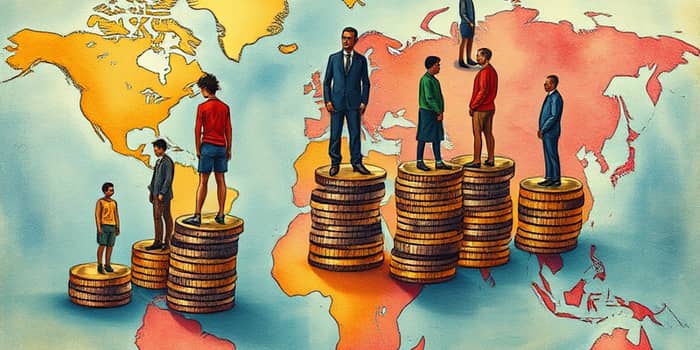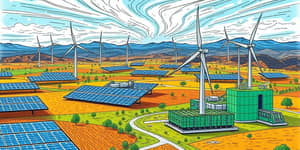
Understanding the forces that shape how wealth is distributed across the globe has never been more critical. From towering city skylines to rural villages, the chasm between those who hold abundant resources and those who struggle to make ends meet continues to widen. By tracing recent data and examining the underlying causes, we can begin to chart a course toward a more equitable future.
This article delves into the latest findings on wealth growth, examines persistent disparities, and offers practical pathways to close the gap. Armed with knowledge and empathy, readers will discover how policy, innovation, and collective action can foster opportunity for all.
In 2024, Global wealth grew by 4.6% in 2024, outpacing the 4.2% rise seen in 2023. North America led this surge, buoyed by a strong US dollar and robust financial markets, contributing over 11% to the global increase. Meanwhile, Asia-Pacific growth hovered below 3%, and regions spanning Europe, the Middle East, and Africa saw gains under 0.5%.
At the same time, the United States and mainland China together comprise more than half of all personal wealth tracked by leading financial institutions. Switzerland and the US top the rankings for average adult wealth, while Luxembourg, Australia, and Belgium lead in median terms, reflecting differing distributions within national borders.
Despite overall gains, extreme global inequality persists at alarming levels. The poorest 50% of the global population command just 8% of total income, while the richest 10% earn over 50%. In an even starker example, 252 men hold more wealth than all 1 billion women and girls in Africa, Latin America, and the Caribbean combined.
Moreover, intergenerational transfer looms large: roughly $83 trillion is projected to pass between generations over the next two decades, concentrated in the United States, Brazil, and China. These vast sums could either entrench privilege or be channeled toward shared prosperity.
Several key dynamics contribute to widening wealth disparities:
Technological advances and international trade have lifted millions out of poverty, yet they often benefit those who already possess capital and expertise. Without deliberate counterbalances, this polarization can intensify social divides.
High inequality carries profound risks. High inequality can slow economic growth, as segments of the population lose access to education, healthcare, and entrepreneurial opportunities. Social mobility declines, and distrust in institutions can fester, eroding the social contract.
The environmental footprint of the ultra-rich further compounds global challenges: the top billionaires emit several times more carbon than the poorest two billion people combined, exacerbating climate crises. In parallel, gender and racial disparities persist in life expectancy, income, and asset ownership, undermining inclusive progress.
Accurate measurement is crucial for designing effective remedies. Common metrics include:
Each measure reveals a different facet of inequality. Recognizing data gaps—particularly for gender, race, and intersectional poverty—is essential to ensure that policies address all affected communities.
Bridging the wealth divide requires concerted action at individual, national, and global levels. Key strategies include:
Catalyzing change demands both visionary leadership and grassroots engagement. Financial institutions, tech companies, and civil society can forge partnerships that prioritize sustainable development and shared prosperity.
The story of global inequality is one of vast transformation—and urgent responsibility. By acknowledging the forces that concentrate wealth, measuring disparities with rigor, and implementing thoughtful policies, we can reshape trajectories to benefit all. This quest for a fairer world calls upon each of us to advocate, innovate, and invest in solutions that leave no community behind.
References













